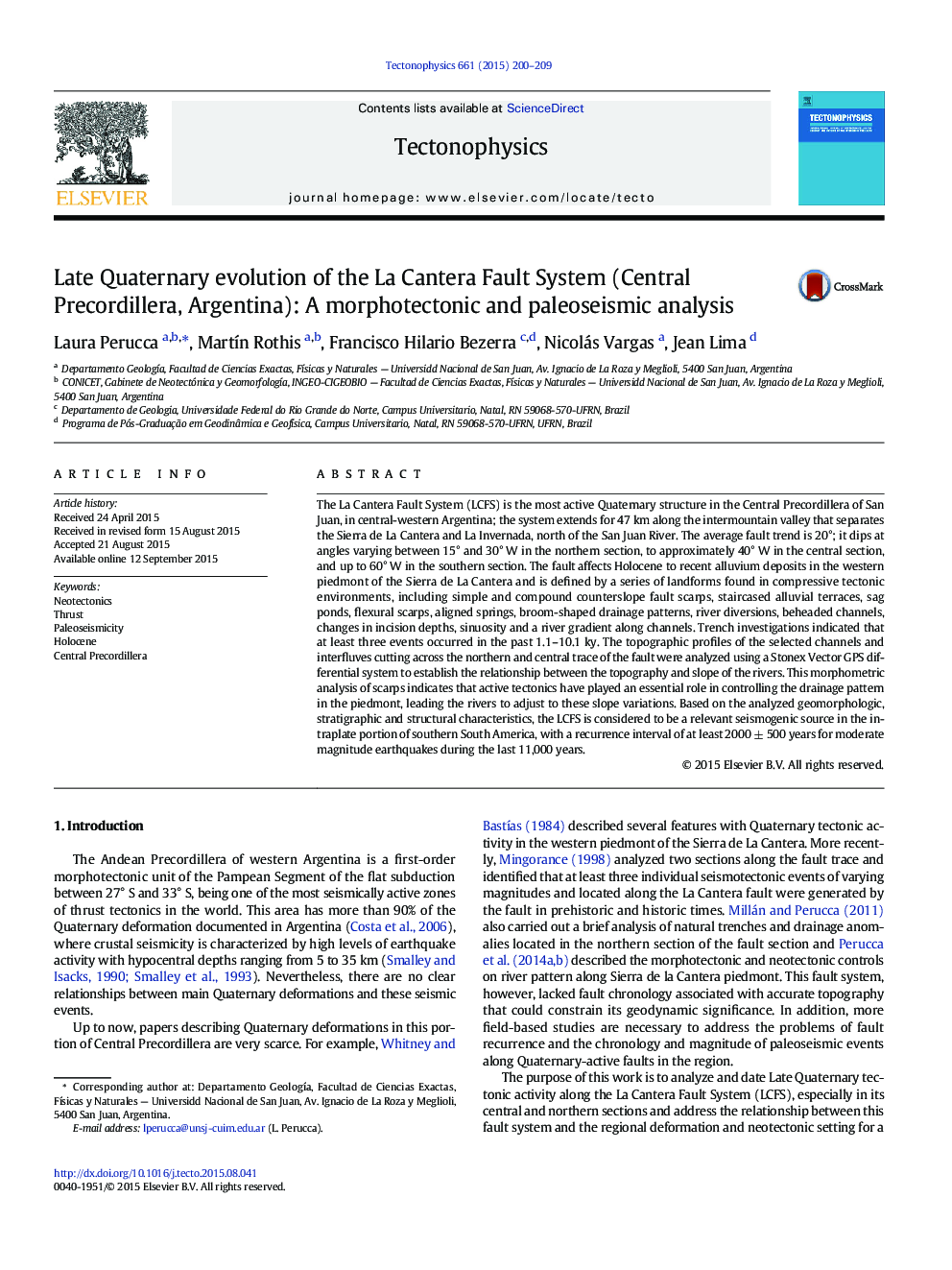| کد مقاله | کد نشریه | سال انتشار | مقاله انگلیسی | نسخه تمام متن |
|---|---|---|---|---|
| 4691517 | 1636734 | 2015 | 10 صفحه PDF | دانلود رایگان |

• We investigated the most active Quaternary fault in the Central Pre-Andes.
• The fault affects Late Holocene to recent alluvium deposits.
• At least three paleoseismic events occurred in the past 11 ky.
• The fault has a recurrence interval of ~ 2.0 ky for moderate magnitude earthquakes.
• The La Cantera fault is a relevant seismogenic source in intraplate South America.
The La Cantera Fault System (LCFS) is the most active Quaternary structure in the Central Precordillera of San Juan, in central-western Argentina; the system extends for 47 km along the intermountain valley that separates the Sierra de La Cantera and La Invernada, north of the San Juan River. The average fault trend is 20°; it dips at angles varying between 15° and 30° W in the northern section, to approximately 40° W in the central section, and up to 60° W in the southern section. The fault affects Holocene to recent alluvium deposits in the western piedmont of the Sierra de La Cantera and is defined by a series of landforms found in compressive tectonic environments, including simple and compound counterslope fault scarps, staircased alluvial terraces, sag ponds, flexural scarps, aligned springs, broom-shaped drainage patterns, river diversions, beheaded channels, changes in incision depths, sinuosity and a river gradient along channels. Trench investigations indicated that at least three events occurred in the past 1.1–10.1 ky. The topographic profiles of the selected channels and interfluves cutting across the northern and central trace of the fault were analyzed using a Stonex Vector GPS differential system to establish the relationship between the topography and slope of the rivers. This morphometric analysis of scarps indicates that active tectonics have played an essential role in controlling the drainage pattern in the piedmont, leading the rivers to adjust to these slope variations. Based on the analyzed geomorphologic, stratigraphic and structural characteristics, the LCFS is considered to be a relevant seismogenic source in the intraplate portion of southern South America, with a recurrence interval of at least 2000 ± 500 years for moderate magnitude earthquakes during the last 11,000 years.
Journal: Tectonophysics - Volume 661, 20 October 2015, Pages 200–209